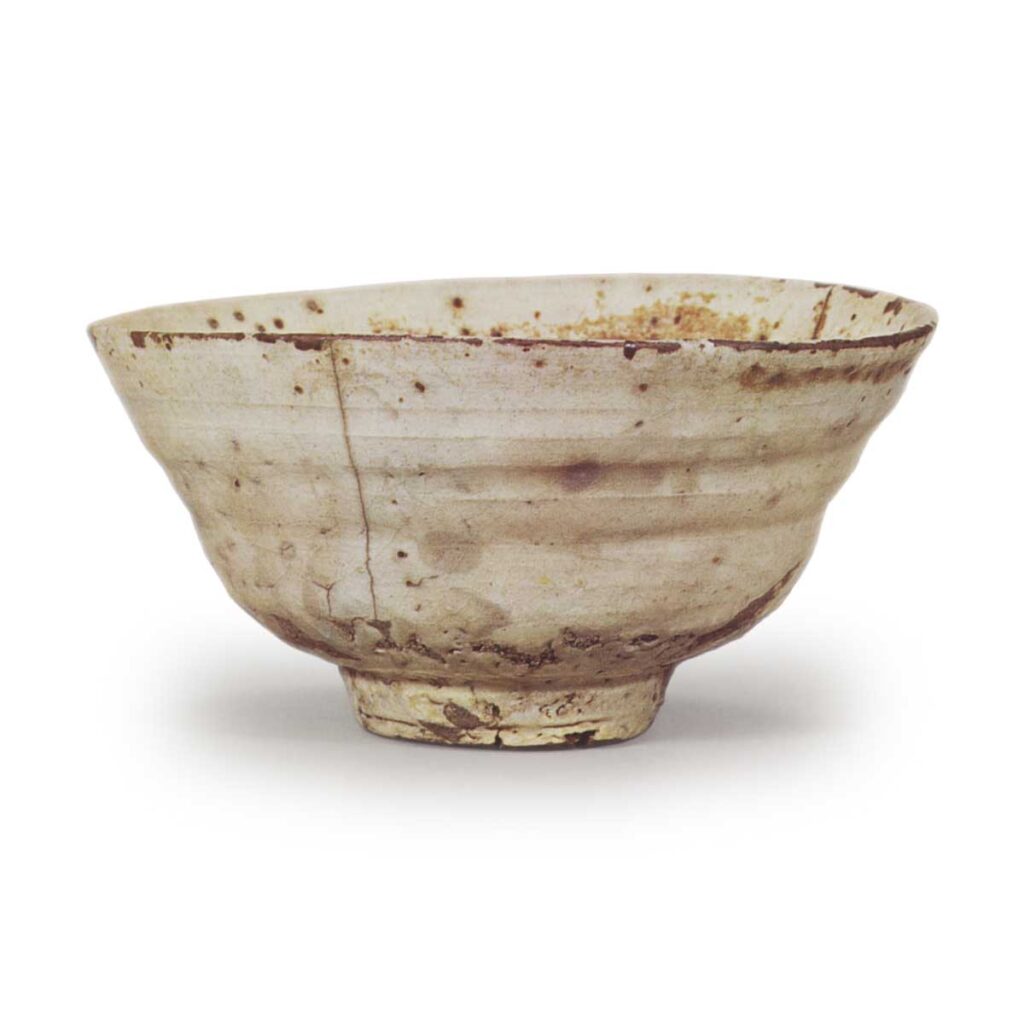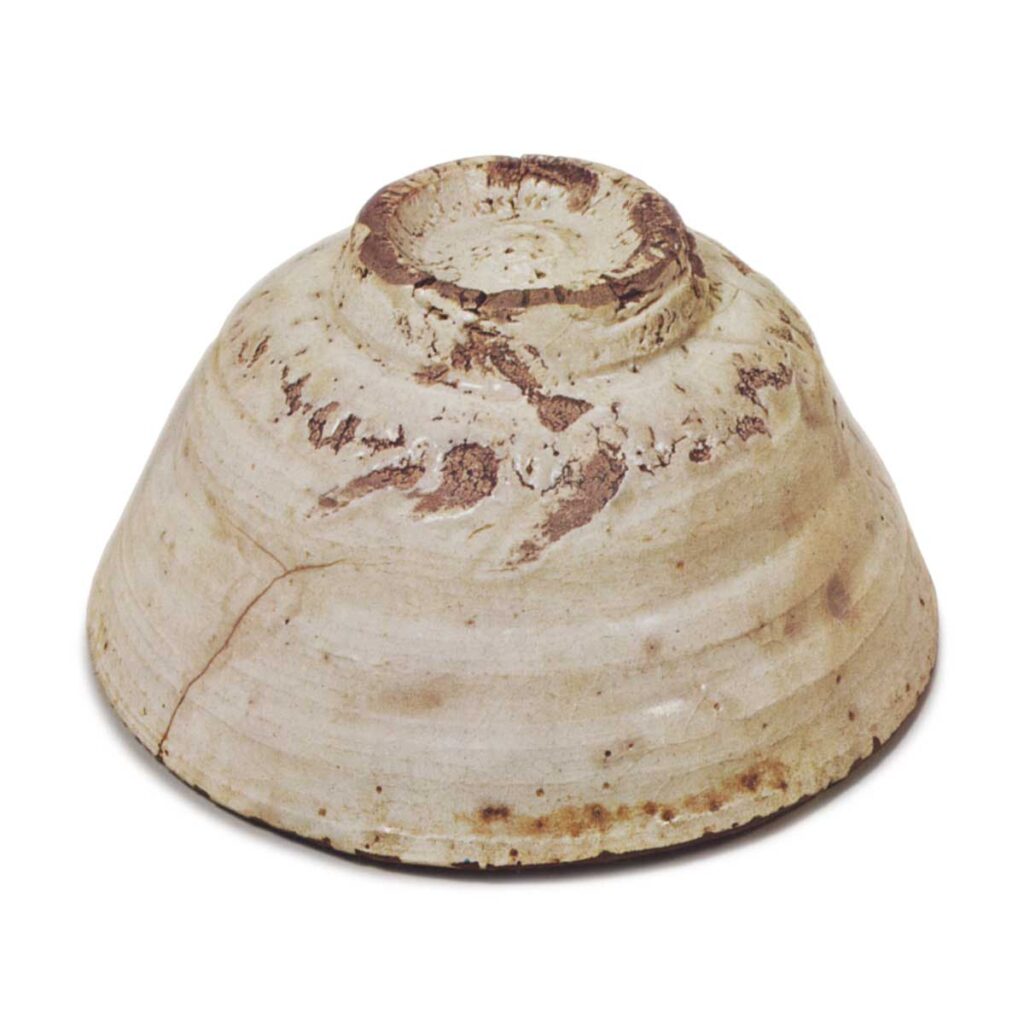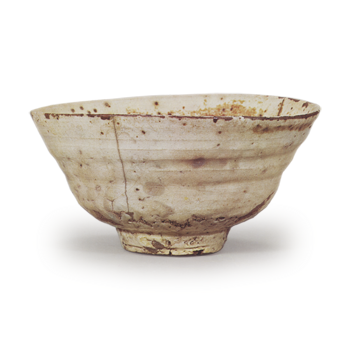

Important Cultural Property
Collection: Nezu Museum
Height: 7.5-8.2cm
Bowl diameter: 15.9cm
Outer diameter of stand: 5.5cm
Height: 1.5cm
As indicated in the storehouse ledger of the former Himeji Sakai family, this is a “kokken-te ameureki” hand. The word “ameleki” is often used for kote, but today it is not necessarily limited to kote, but can be used for kumagawa or kohiki as well.
Ko-kote has one characteristic. It is not hard Airai, but rather a full glaze with no earthiness, and is wheel-thrown in a free and unrestrained manner, in the same clay style as wells. The base is made of bamboo, the glaze is thick, soft and translucent, the glaze surface is not very shiny, and leaks are purple.
In this respect, this tea bowl with rain leaks handed down in the Sakai family is a typical example of Kouken-te, and is truly outstanding among all other bowls. The body of this bowl has the appearance of a famous Oido bowl, and although it is rather thin, it has a rough and rugged clay body with several rough turns on the potter’s wheel. The two vertical penetrations are also impressive and add a kind of scenery. The thickly glazed skin on both the inside and outside of the vessel, which is almost translucent, is reminiscent of the skin of a soft white jade, and the uneven shading of the glaze and the weeping glaze show the extremes of change. The rough surface on the side of the high stand shows a thicker glaze, or in the style of kairagi (plum blossom bark), or with a hanging or fire gap. The inside of the stand shows polished clay with a helmet width and tatami mats. The even-grained appearance from inside and outside to the sides is nothing short of magnificent.
On the glazed surface, purple spots are dreamily shimmering between the rhythmical wheel throwing. Around the inner surface, the purple tints are even darker and scattered in various places. The glaze is thick and looks like coagulation, and there are four elegant eyes in the glaze. There are four elegant eyes in the glaze, and there are lacquer stains at several places around the rim.
This tea bowl is considered to be the very first of its kind in the Yi Dynasty, and is highly prized not only as a tea bowl, but also as a rare example of Yi Dynasty white porcelain.
Box with inscription on the front of the lid, Sasaki Bunzan, “Koryo Tea Bowl with Rain Leak
This tea bowl has been in the collection of the Sakai family of Himeji since the Edo period, and was given to Aoyama (Kaichiro) Nezu in the Taisho period (1912-1926), and became part of the Nezu Museum collection with its establishment in 1941.



